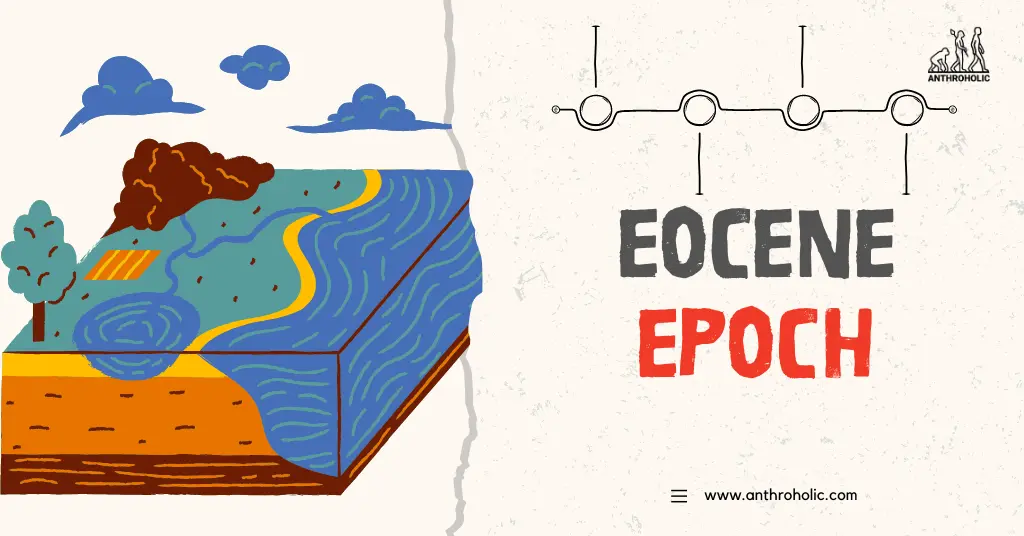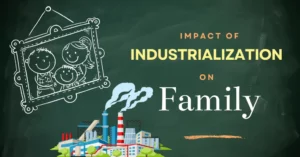AI Answer Evaluation Platform Live Now. Try Free Answer Evaluation Now
Eocene Epoch
The Eocene Epoch, one of the most intriguing periods in Earth’s history, spans from around 56 to 33.9 million years ago, following the Paleocene Epoch and preceding the Oligocene Epoch [1]. It was a crucial time of biological, climatic, and geographical transformations. This article will delve into the climatic conditions, geographical transformations, flora, fauna, and important discoveries associated with the Eocene Epoch.

Climatic Conditions in the Eocene Epoch
Greenhouse Climate
The Eocene is noted for its distinctly warm climate. A ‘Greenhouse Earth’ state was in effect, characterized by the absence of polar ice caps [2]. This contrasts starkly with our current ‘Icehouse Earth’ where polar ice caps are present.
Table 1: Comparative Average Global Temperatures
The Eocene Epoch’s temperature peak, known as the “Eocene Thermal Maximum” (ETM), occurred approximately 50 million years ago. During this event, deep-sea temperatures may have risen by as much as 6°C [5].
The Eocene-Oligocene Transition
Towards the end of the Eocene, around 34 million years ago, there was a significant climate shift towards cooler conditions, marking the transition to the Oligocene Epoch. This period, termed the “Eocene-Oligocene Climate Transition” (EOT), saw the first substantial ice growth in Antarctica [6].
Geographical Transformations
During the Eocene, continental drift played a significant role in shaping the Earth’s geography. Key events included the continued separation of Antarctica from South America, resulting in the formation of the Drake Passage [7], and the initial collision of India with Asia, leading to the formation of the Himalayan mountain range [8].
Table 2: Key Geographical Changes
| Event | Approximate Timing |
|---|---|
| Formation of Drake Passage | Mid-Eocene |
| Beginning of the Himalayan mountain formation | Late Eocene |
Flora and Fauna of the Eocene Epoch
Flora
The Eocene’s tropical to subtropical climate fostered a diverse array of plant life. The first modern trees, such as beeches, maples, and oaks, began to appear, leading to the formation of extensive forests [9]. Additionally, grasses began to diversify, although they were not yet predominant [10].
Fauna
The Eocene was a vibrant era for animal life, with the evolution of several modern mammalian orders. Some of the most significant evolutionary developments included:
- The first appearance of many modern mammalian families, including bats and early ancestors of elephants [11].
- The evolution of primates, with the first appearance of the predecessors to modern monkeys and apes [12].
- The evolution of cetaceans from a terrestrial life to a fully aquatic existence [13].
Important Eocene Discoveries
Notable discoveries from the Eocene include the Messel Pit in Germany, a UNESCO World Heritage Site, which holds a plethora of well-preserved fossils from the middle Eocene [14]. Furthermore, the Green River Formation in the western United States is another renowned Eocene-age deposit, known for its exceptionally preserved fish fossils and fossilized plant material [15].
A Closer Look at Eocene Fauna
Mammals
The Eocene was an epoch of significant mammalian evolution, following the extinction of dinosaurs at the end of the Cretaceous period. A wide range of mammalian families emerged during this time, many of which still exist today. In particular, the evolution of primates and cetaceans marked important milestones in the history of life on Earth.
Primates
Primates made considerable strides during the Eocene, with the first appearances of many early forms. The epoch saw the emergence of the first prosimians — the group of primates that includes lemurs and tarsiers. The oldest known anthropoid (the primate group that includes monkeys, apes, and humans), Altiatlasius, is also from the Eocene [16].
Cetaceans
The Eocene was also a pivotal time for the evolution of cetaceans, which includes whales, dolphins, and porpoises. Land-dwelling ancestors of cetaceans started to transition towards a fully aquatic lifestyle during this epoch. The well-known fossil of Ambulocetus, often referred to as the ‘walking whale,’ provides evidence of this significant evolutionary shift [13].
Birds
Birds continued to evolve during the Eocene, with the first appearances of several modern bird groups, including the earliest known species of penguins. The Eocene also saw the existence of prehistoric birds like Gastornis, a flightless bird that reached up to two meters in height, hinting at the remarkable diversity of avian life during this time [17].
Eocene’s Implication on Current Climate Change Understanding
Paleoclimatology and Paleoclimatic Models
Studying the Eocene Epoch’s climatic conditions provides valuable insights into how the Earth’s climate system behaves under high greenhouse gas concentrations. Paleoclimatologists (scientists who study climates of the past) often refer to the Eocene’s climate to understand and predict potential future climate scenarios.
During the early Eocene, the Earth’s climate was significantly warmer than today, even at the poles, and there was little temperature gradient from the equator to the poles [3]. The disparity between the warmth of the Eocene and the predictions of climate models has been a subject of ongoing scientific research, often referred to as the “equable climate problem” [3]. The study of this problem is crucial to understanding the sensitivity of the Earth’s climate to increasing greenhouse gas concentrations, a major concern due to ongoing anthropogenic climate change.
Conclusion
The Eocene Epoch was a pivotal period in Earth’s history, marking significant transformations in climate, geography, flora, and fauna. This epoch not only set the stage for the modern world as we know it but also holds the keys to understanding Earth’s potential future under current climate change conditions. The study of the Eocene epoch is, therefore, an active and essential area in the fields of paleontology and paleoclimatology.
References
[1] Prothero, D. R. (2006). After the Dinosaurs: The Age of Mammals. Indiana University Press.
[2] Zachos, J., Pagani, M., Sloan, L., Thomas, E., & Billups, K. (2001). Trends, Rhythms, and Aberrations in Global Climate 65 Ma to Present. Science.
[3] Huber, M., & Caballero, R. (2011). The Early Eocene Equable Climate Problem Revisited. Climate of the Past.
[4] IPCC. (2014). Climate Change 2014: Synthesis Report. Contribution of Working Groups I, II and III to the Fifth Assessment Report of the Intergovernmental Panel on Climate Change.
[5] Zachos, J. et al. (2003). An extreme climatic event in the tropical Pacific Ocean. Nature.
[6] Coxall, H.K., & Pearson, P.N. (2007). The Eocene-Oligocene transition. Deep Time Perspectives on Climate Change.
[7] Barker, P. F., & Burrell, J. (1977). The Drake Passage. Geological Society of America.
[8] Molnar, P., & Tapponnier, P. (1975). Cenozoic Tectonics of Asia: Effects of a Continental Collision. Science.
[9] Willis, K. J., & McElwain, J. C. (2002). The Evolution of Plants. Oxford University Press.
[10] Strömberg, C. A. E. (2005). Decoupled taxonomic radiation and ecological expansion of open-habitat grasses in the Cenozoic of North America. PNAS.
[11] Rose, K. D. (2006). The Beginning of the Age of Mammals. The Johns Hopkins University Press.
[12] Seiffert, E. R. (2007). A new estimate of afrotherian phylogeny based on simultaneous analysis of genomic, morphological, and fossil evidence. BMC Evolutionary Biology.
[13] Gingerich, P. D. (2006). Environment and evolution through the Paleocene-Eocene thermal maximum. Trends in Ecology & Evolution.
[14] Messel Pit Fossil Site. (n.d.). UNESCO World Heritage Centre.
[15] Grande, L. (1984). Paleontology of the Green River Formation, with a review of the fish fauna. Geological Survey of Wyoming.
[16] Tabuce, R., Marivaux, L., Adaci, M., Bensalah, M., Hartenberger, J. L., Mahboubi, M., … & Jaeger, J. J. (2007). Early Tertiary mammals from North Africa reinforce the molecular Afrotheria clade. Proceedings of the Royal Society B: Biological Sciences.



